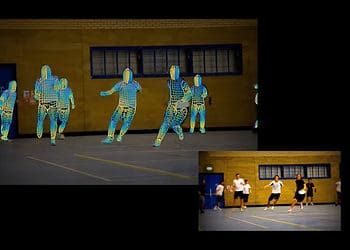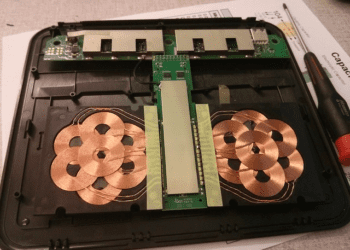Researchers at the National University of Singapore (NUS) and the Tohoku University (TU), Japan, are working to make a device near you powered by the WiFi signals that are commonplace in the modern world.

Wireless networks are everywhere in towns and cities today. They connect a million devices to the Internet, day in, day out. Needless to say, that’s a lot of energy — over the 2.4GHz radio frequency that such networks use — being beamed all around us all the time. New research is working to harness this energy for a useful purpose, such as charging (for now, tiny) devices.
Airdropping charge
“We are surrounded by WiFi signals, but when we are not using them to access the Internet, they are inactive, and this is a huge waste. Our latest result is a step towards turning readily-available 2.4GHz radio waves into a green source of energy, hence reducing the need for batteries to power electronics that we use regularly.”
“In this way, small electric gadgets and sensors can be powered wirelessly by using radio frequency waves as part of the Internet of Things. With the advent of smart homes and cities, our work could give rise to energy-efficient applications in communication, computing, and neuromorphic systems,” said Professor Yang Hyunsoo from the NUS Department of Electrical and Computer Engineering, who led the research.
The team developed a new technology that uses tiny smart devices known as spin-torque oscillators (STOs), which can harvest and convert wireless radio waves into power for devices. They showed that these devices can successfully harvest energy from WiFi signals and that they could generate enough energy to power a light-emitting diode (LED) wirelessly, without using a battery.
STOs are devices that can receive radio signals and transform them into microwaves. Although that sounds amazing, they’re still an emerging technology, and are still quite inefficient at their job. Currently, STOs are only able to output low levels of power.
One workaround we’re using right now is to stack several STOs together, but this isn’t always viable: many devices have spatial constraints because nobody likes chunky items. Individual STOs are also limited in the range of frequencies they can react to, generally limited to only a few hundred MHz, which further complicates their use.
The team’s solution was to use an array of eight STOs connected in a series. This was then used to convert the 2.4 GHz electromagnetic radio waves used by WiFi into a direct voltage signal (electrical current), fed to a capacitor, and used to light a 1.6-volt LED. Five seconds of charging time on the capacitor was enough to keep the LED lit for one minute with the wireless power switched off.
As part of the research, they also performed a comparison between the STOs series design they used and a parallel design. The latter, they explain, has better time-domain stability, spectral noise behavior, and control over impedance mismatch — or, more to the point for us laymen, it’s better for wireless transmission. The series layout is more efficient at harvesting energy.
“Aside from coming up with an STO array for wireless transmission and energy harvesting, our work also demonstrated control over the synchronising state of coupled STOs using injection locking from an external radio-frequency source,” explains Dr Raghav Sharma, the first author of the paper.
“These results are important for prospective applications of synchronised STOs, such as fast-speed neuromorphic computing.”
In the future, the team plans to increase the number of STOs in their array, and test it for wirelessly charging other devices and sensors. They also hope to get interest from industry in developing on-chip STOs for self-sustained smart systems.
The paper “Electrically connected spin-torque oscillators array for 2.4 GHz WiFi band transmission and energy harvesting” has been published in the journal Nature Communications.






